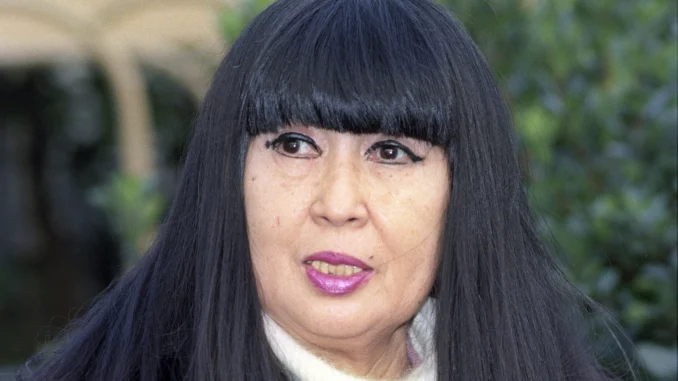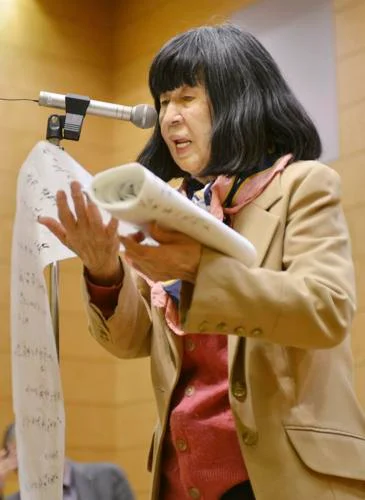
Kazuko Shiraishi Biography- Kazuko Shiraishi, a name that resonates with poetry enthusiasts around the world, is not just a poet but a translator and a jazz aficionado. Born in Vancouver, Canada, on February 27, 1931, Shiraishi’s journey into the literary world is as fascinating as her poetry. Let’s delve into her life story, her contributions to modernist poetry, and her unique style that blends the traditional with the contemporary.
Early Life and Background
Kazuko Shiraishi was born on February 27, 1931, in Vancouver, British Columbia, Canada. Her family moved to Japan when she was young, which deeply influenced her cultural perspective and literary style. Growing up in post-war Japan, Shiraishi was exposed to a blend of Western and Eastern literary traditions that would later shape her unique voice in poetry.
Education
Shiraishi attended Waseda University, where she delved into literature and poetry. Influenced by Japanese modernists and Western writers, she developed a unique style marked by vivid imagery and deep emotions.
Age
At the time of her passing, Shiraishi was 93 years old. The Tokyo publisher of her works, Shichosha, announced that she died of heart failure on June 14.
Career

Kazuko Shiraishi’s career is a remarkable journey through the landscape of modernist poetry, marked by innovation, cultural fusion, and global influence. Starting in the early 1950s, she quickly established herself as a significant voice in Japanese literature.
Early Career and Breakthrough
Shiraishi’s early career blossomed with the “VOU” poetry group led by Katsue Kitazono, renowned for its avant-garde style. Her debut poetry book in 1951 gained acclaim for its daring themes and experimental flair, marking the beginning of a prolific journey where she consistently pushed the limits of poetic expression.
Unique Style and Themes
Shiraishi’s unconventional personality and poems challenged Japan’s traditional literary forms like haiku and tanka, opting for a modern, uncharted path. Rexroth facilitated the translation of her works into English, including collections such as “My Floating Mother, City” in 2009 and “Seasons of Sacred Lust” in 1978. Her poetry has been translated into numerous languages, and she was also known for translating works by Ginsberg. In 1973, Paul Engle invited her to the International Writing Program at the University of Iowa, broadening her artistic horizons. German writer Gunter Kunert noted the fusion of East and West in her poems, debunking the notion that they can never intertwine.
Jazz and Poetry Performances
A distinctive aspect of Shiraishi’s career is her collaboration with jazz musicians, performing her poetry at jazz concerts. This fusion of words and music has broadened her audience and added a new, multisensory dimension to her poetry.
Global Reach and Translations
Shiraishi’s influence is global, with her work translated into multiple languages. This has brought her poetry to a worldwide audience, earning her international acclaim and cementing her status as a global literary figure.
Awards and Recognitions
Throughout her career, Kazuko Shiraishi has received numerous accolades and awards. The title poem is from Shiraishi’s 1996 book which received three prestigious awards in Japan––the Yomiuri Literature Award, the Takami Jun Poetry Award, and the very special Purple Ribbon Medal from the Emperor of Japan.
Legacy
Kazuko Shiraishi’s legacy in poetry is marked by pioneering innovation and profound influence, transcending cultural boundaries and inspiring generations of poets worldwide.
FAQs
1. Who is Kazuko Shiraishi?
Kazuko Shiraishi is a renowned Japanese poet and translator known for her modernist and experimental style. Born in Vancouver, Canada, she has significantly impacted the poetry world.
2. What is Kazuko Shiraishi famous for?
Shiraishi is famous for her vivid, emotionally intense poetry and her jazz concert performances. She is also known for her role in the modernist poetry movement and her work with the “VOU” poetry group.
3. Where was Kazuko Shiraishi born?
Kazuko Shiraishi was born in Vancouver, British Columbia, Canada, on February 27, 1931.
4. What are the funeral arrangements and who survives Kazuko Shiraishi?
The family held a private funeral while they plan a memorial service. Kazuko Shiraishi is survived by her husband, Nobuhiko Hishinuma, and a daughter.
5. What are some of Kazuko Shiraishi’s notable works?
Shiraishi’s notable works include her debut book of poems from 1951 and various collections exploring themes of love, nature, and existentialism. Translators have translated her work into multiple languages, reaching a global audience.
6. How has Kazuko Shiraishi influenced modernist poetry?
Kazuko Shiraishi has influenced modernist poetry with her innovative and experimental style, blending traditional Japanese elements with contemporary themes. Her work has inspired many poets to explore new forms and expressions.
Conclusion
Kazuko Shiraishi’s life and work showcase the power of poetry to cross cultural and temporal boundaries. From Vancouver to Japan, her innovative contributions have solidified her legacy as a significant modernist poet, leaving an enduring impact on the world.

Leave a Reply